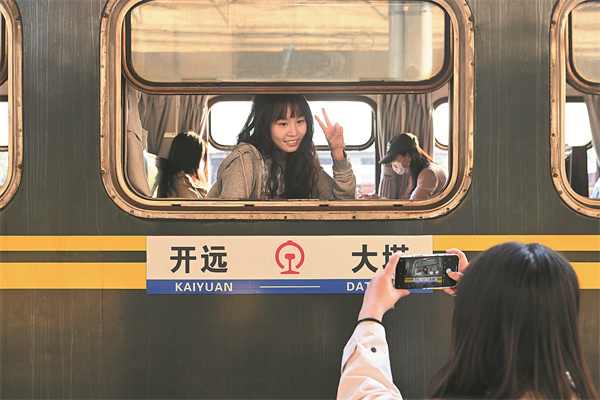

According to records kept by foreign engineers, Yunnan's high mountains and deep valleys posed huge problems for the railway's constructors. On the Chinese section of the Yunnan-Vietnam Railway, there are 274.4 km of curves, accounting for 59.1 percent of its total length. Also, 75 bridges, 155 tunnels and 3,247 culverts were built along the railway with an elevation discrepancy of 1,954 meters.
Although passenger services were ceased in 2003, passenger experience of the train ride has lived on. Locals remember the S-shaped railway, rolling trains, bold drivers and brave travelers.
The most famous and must-see engineering marvel of the railway is the Wujiazhai Railway Bridge, commonly referred to as renziqiao for its unique arch design that looks like the Chinese character for people, or ren.
The bridge, located in Pingbian Miao autonomous county in Honghe Hani and Yi autonomous prefecture, straddles a gorge in between two mountains. As daily train services are very limited and not fixed, tourists are considered lucky if they are able to see the train come out from a tunnel passing the bridge 102 meters above the roaring Sicha River.
Tourists can hike up to the bridge in 45 minutes and can walk on the bridge to see it up close. To get to the bridge, tourists need to walk through a tunnel after reaching the railway tracks. They are able to see tool marks on the insides of the tunnel, evidence that it was dug out manually and a reminder of the hardships that the workers had to endure during its construction.
After seeing light at the end of the tunnel, the legendary Wujiazhai Railway Bridge will be within sight, reliable and charming as ever more than a century later. Visitors can then gather on viewing platforms on the bridge to admire the beauty of the bridge and watch the train pass by.
To build the 67.15-meter-long bridge connecting the extremely steep cliffs, French engineer Paul Bodin developed a new technique involving lowering two steel triangular trusses, one from each side of the mountain supported by ball-shaped seats of cast steel.
The construction project started in March 1907 and all parts of the bridge were shipped from France and assembled by Chinese workers. An estimated 800 Chinese workers lost their lives during the construction. A French newspaper commented at the time that the construction of the bridge was a "dance above death".